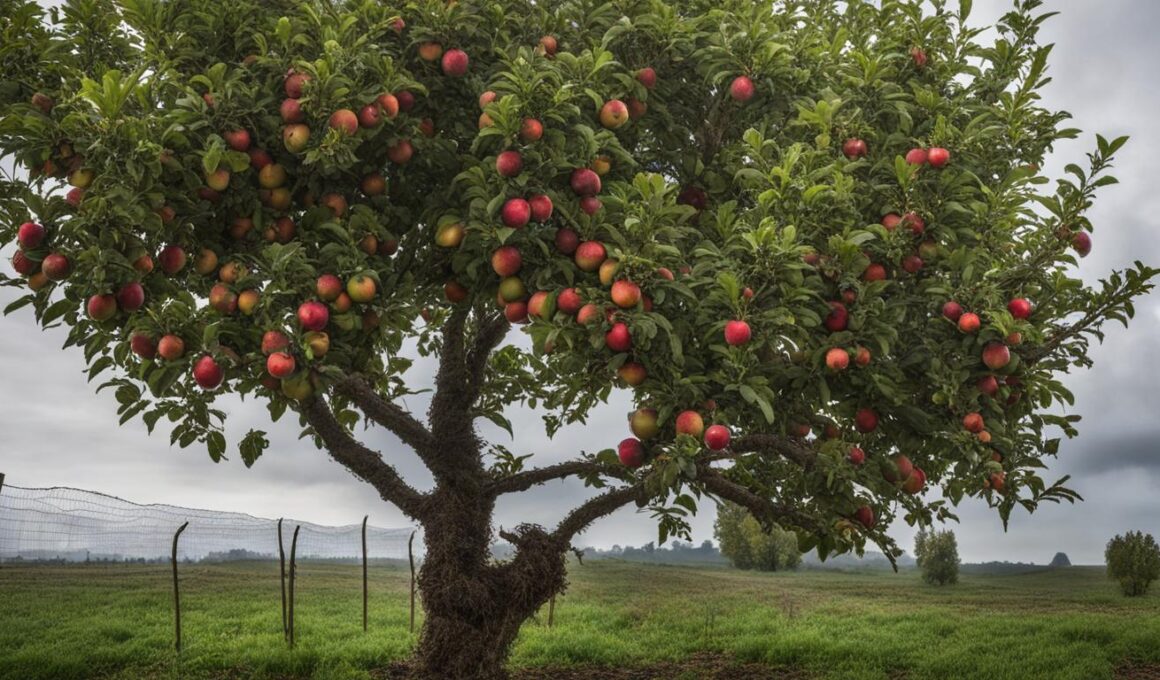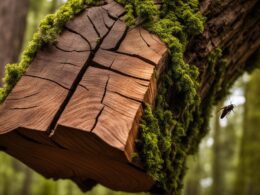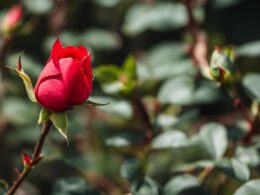Are you noticing black spots on your apples? These unsightly blemishes can be a cause for concern, but fear not! In this article, we will explore the causes of black spots on apples and provide you with effective prevention methods to ensure the health and quality of your apple crop.
Black spots on apples are commonly known as apple scab, a fungal disease caused by Venturia inaequalis. This fungus can infect the leaves, shoots, buds, blossoms, and fruit of apple trees, posing a threat to their overall health. Apple scab is particularly prevalent in regions with high rainfall and humidity during the growing season.
Apple scab manifests as small spots on the underside of young leaves, lesions on older leaves that become black and velvety, and dark spots on mature fruit. If left unchecked, it can lead to reduced fruit quality, premature fruit drop, defoliation, and poor development of fruit buds.
Preventing apple scab requires a proactive approach. While some apple cultivars show resistance to scab, using scab-resistant varieties can provide even better protection. Additionally, practicing proper sanitation and pruning techniques can significantly reduce the risk of infection.
Stay tuned for the following sections where we will delve into specific prevention methods for orchards and backyard apple trees. By implementing these strategies, you will be well on your way to preventing black spots on your beloved apples and enjoying a healthy harvest.
Preventing Apple Scab in Your Orchard
To prevent apple scab in your orchard, you can take several measures. First, consider using scab-resistant apple varieties, as they are less susceptible to the disease. Some scab-resistant cultivars include Cripps Pink (including Pink Lady™), Lady William, Jonathan, and Bonza.
It is also important to practice good sanitation practices to minimize the risk of apple scab. This includes removing and mulching infected leaves to prevent the spores from spreading, pruning branches to improve air circulation and reduce humidity, and avoiding overhead irrigation that can create a favorable environment for the fungus to thrive.
Another crucial control measure is the use of protectant sprays. These sprays help create a protective barrier on the leaves and fruits, preventing the germination of the fungus spores. Apply the sprays at specific times during the growing season according to the product instructions.
Additionally, if you observe any signs of infection, consider using post-infection sprays to suppress established infections. These sprays should be applied within a few days after the wet period that initiated the infection.
By implementing these preventive measures, you can significantly reduce the risk of apple scab in your orchard and maintain the health of your apple trees for better fruit production and quality.
Tips for Controlling Apple Scab in Your Backyard
If you have apple trees in your backyard, there are specific tips you can follow to control apple scab. First and foremost, consider planting disease-resistant cultivars. These cultivars have been specially bred to be less susceptible to scab, ensuring healthier trees and better fruit production. Some examples of disease-resistant apple cultivars include Crimson Crisp, Enterprise, Galarina, Goldrush, Liberty, Pristine, and Redfree. By opting for these cultivars, you can significantly reduce the risk of scab infection.
Proper pruning techniques are another crucial aspect of controlling apple scab. Thinning out the branches improves air circulation, preventing moisture buildup and creating an unfavorable environment for scab development. Prune your apple trees regularly, ensuring there is enough space between branches for air to circulate freely.
In addition to disease-resistant cultivars and pruning, implementing sanitation practices is essential. Removing and properly disposing of infected leaves reduces the risk of scab carryover from one season to another. By keeping your orchard clean and free of debris, you can create an environment that is less conducive to scab growth and spread.
Lastly, staying informed and monitoring scab warnings in your area can help you take timely action to prevent infection. Keep an eye on weather conditions and consult local agricultural extension services or horticulture experts for guidance. While chemical control options may be limited for home gardeners, following these tips – planting disease-resistant cultivars, practicing proper pruning techniques, and maintaining good sanitation practices – can significantly decrease the incidence and severity of apple scab in your backyard.
Can the Homemade Remedy for Black Spots on Roses Also Work for Preventing Black Spots on Apples?
Yes, the homemade remedy for black spots can also work for preventing black spots on apples. The mixture of baking soda, water, and dish soap used for roses can also be effective for preventing black spot disease on apple trees. It’s a safe and natural solution for both plants.
Source Links
- https://www.bhg.com/gardening/vegetable/fruit/the-6-most-common-apple-diseases-and-how-to-prevent-them/
- https://www.sciencenorway.no/biology-fungus-plants/heres-how-to-get-rid-of-black-spots-on-the-apples-in-your-garden/2024045
- https://agriculture.vic.gov.au/biosecurity/plant-diseases/fruit-and-nut-diseases/pome-fruits/apple-scab









